Could the end-game already be in sight for New York’s current real estate cycle? Jack Sidders travelled to the Big Apple to find out more
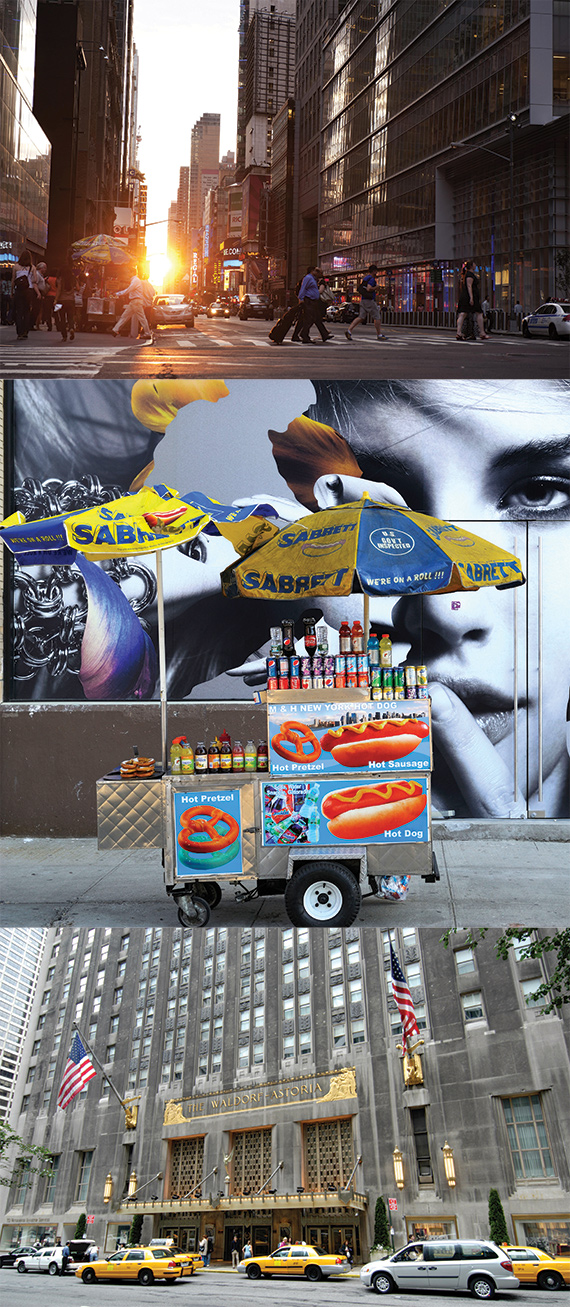 NEW YORK SPECIAL: The US economy is into its seventh year of recovery. As a result, this is one of the longest periods of expansion in the country’s history. The depth of the last crash ensured few celebrated the milestone, but its impact on the country’s biggest real estate market, New York, has been profound.
NEW YORK SPECIAL: The US economy is into its seventh year of recovery. As a result, this is one of the longest periods of expansion in the country’s history. The depth of the last crash ensured few celebrated the milestone, but its impact on the country’s biggest real estate market, New York, has been profound.
Investment volumes are booming, yields are near record lows and occupiers are steadily filling the surge of new development, lifting rents by as much as 50% in some pockets of the city. The chief concern for many, then, is how long can it last?
In baseball, the seventh inning is traditionally when spectators get up, stretch, and review the scoreboard as the game nears its ninth inning climax. So is the city’s real estate cycle nearing a climactic peak? Or is there still plenty of time left to play?
Investment spike
Investment in the New York City metro area topped $44bn (£28.5bn) in the first half of 2015, according to Real Capital Analytics.
That compares with a total investment volume of $69bn for the whole of 2014, itself a huge leap on the $58bn recorded in 2013. In fact, it more than exceeds the full-year investment for the whole of both 2010 and 2011 and is only just short of the $47bn achieved in the whole of 2012.
Volumes are up across the board in offices, retail, industrial, hotels, residential and land sales, with each sector on track to beat its 2014 performance. And while the fundamentals that have encouraged the year-on-year growth seen since 2010 remain steady – low interest rates, a healthy spread over government bonds and a steadily growing economy supporting occupier growth – there is one very definite trend that is pushing the spike.
“International investment into New York is really accelerating now,” says Chris McGibbon, managing director at TIAA-CREF, who oversees the organisation’s general account and international real estate investment.
“If you look at the macro, the relative search for yield and the risks of investing in emerging markets right now versus developed economies, I think the US shows good fundamentals.”
Overseas buyers spent almost $11bn on New York City property in the first half of this year, already more than the $9.8bn they spent in the whole of 2014. In contrast to other global gateway cities, most notably London, New York has traditionally been dominated by US buyers, with overseas investment accounting for a modest proportion of overall cross-border real estate spending. While that remains broadly true, there are signs it is starting to change.
Canadians remain the biggest overseas spenders in the US, accounting for 22% of overall spend, but it has been the Asian buyers hogging the headlines of late as their investments rocketed to 24% of volume in 2014 from just 6% in 2007, according to CBRE.
“Traditionally, investors have stopped in London on their journey west before arriving on the east coast,” says Borja Sierra, executive managing director and head of US capital markets at Savills Studley.
But in a few high-profile cases in recent years, it appears that some major Asian investors are stopping in New York first.
Chinese insurance company Anbang closed its $1.95bn acquisition of New York’s Waldorf Astoria Hotel in February this year.
The massive deal helped ensure that the first half of 2015 saw Asian investors spend more money on US than European real estate for the first time. Asian investors spent $3.3bn on US real estate in Q1 2015, versus $2.5bn in Europe. Almost as significantly, it represented Anbang’s first deal on either continent, despite having spent a long time assessing opportunities in the London market. Anbang followed up its Waldorf deal with the purchase of an office building on New York’s Fifth Avenue shortly afterwards.
The giant insurer joins a handful of other Asian investors that have chosen to buy in New York first. Soho China chief executive Zhang Xin bought a $1bn stake in the GM building in downtown New York in 2013 and has since followed up the deal with a luxury residential investment.
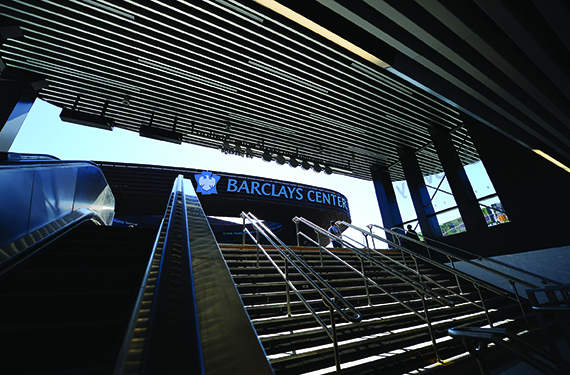
More opportunity
So why the shift? For Sierra, if these deals are emblematic of New York’s growing status as a cross-border investment destination, “it is simply because there has been more opportunity” with big deals on offer.
The main reason New York, and the US as a whole, has traditionally played second fiddle to Europe in cross-border activity is that it is far less tax-friendly to overseas buyers than other gateway markets. The Foreign Investment in Real Property Tax Act of 1980 (FIRPTA) means that overseas owners holding more than a 49% stake in any US real estate asset are hit with a 10% tax when they come to sell it. This law remains a significant inhibitor to cross-border activity, but there are now some early signs that politicians from both the main US political parties have an appetite for reform or even repeal.
In the meantime, more and more overseas buyers have become comfortable taking minority stakes in assets, thus avoiding the tax, or investing for the long term.
And because New York has so many large assets that are being traded, there are plenty of opportunities for major global investors to deploy significant slugs of equity in the city and yet remain minority investors in a deal, as is the case with Xin’s GM stake purchase.
“The EB5 programme has been in place since 1990 but we have really seen an acceleration in the past few years”
In reality, there are various structures that will minimise FIRPTA’s impact, although they are generally complex and therefore Asian investors have typically headed for Europe first before grappling with the US market. But the sheer appetite of Asian buyers, in particular for New York assets, has been underlined by demand for another government investment policy.
EB5 is a visa programme that grants green cards to overseas investors who commit at least $500,000 to capital investment projects that will create jobs in the US. Each investment must create at least 10 jobs and the exact investment threshold is determined based on the employment needs of the area in which it is targeted. The typical minimum investment is $1m, but the threshold can be halved if the money is targeted at an area deemed to be in particular need of employment.
“The EB5 programme has been in place since 1990 but we have really seen an acceleration in the past few years,” says Heidi Learner, chief economist at Savills Studley. “Only recently has the programme maxed out [at 10,000 visas a year]. And the reason that has happened is entirely down to Chinese investors.”
Indeed, such is the appetite of Chinese investors that the programme, which for two decades was largely overlooked, has recently been used to fund some high-profile projects.
These include a $475m contribution to the Barclays Centre in Brooklyn, which is being developed as part of the $4.9bn Atlantic Yards project; $600m from 1,200 Chinese families towards Related Companies’ Hudson Yards scheme; and the backing of a 630ft-high Ferris wheel being built on New York’s Staten Island.
The surge in activity under EB5 has prompted lawmakers to consider amending the policy, with bills moving through Congress that would raise the thresholds for investment and job creation and tighten loopholes that some say have seen investors get creative with their assessment of the beneficial impact that some schemes might have.
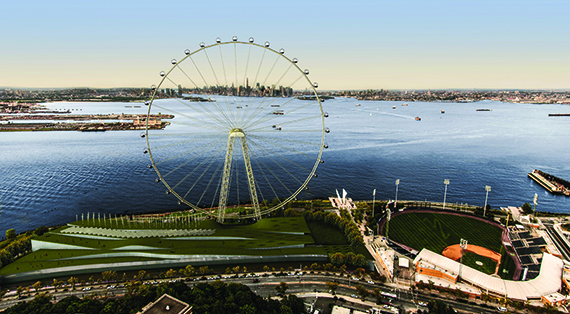
Taking on more risk
The consequence of all this overseas appetite for the Big Apple is incredibly low investment yields.
Prime office assets in the most desirable parts of Manhattan are now trading at yields of just 3.5%, according to JLL.
That has driven many domestic investors, particularly the private equity fund managers, higher up the risk curve, either into development or into secondary assets and locations.
Northwood, the private equity real estate fund manager established by former Blackstone real estate chief John Kukral, is headquartered in New York but has spent considerably more time on acquisitions in Europe than in its domestic market over the past couple of years.
The company owns 100 Broadway, a 380,000 sq ft downtown office block it bought for $150m in 2013, but it sold its other main New York asset, the Palace Hotel, to South Korea’s Lotte Group for $805m earlier this year, cashing in a stellar return thanks to the yield compression brought about by overseas interest.
By contrast, the company has a four-strong portfolio of offices in London, recently acquired Highcross to give it a regional UK investment platform, and owns assets across Europe including a prime shopping centre in Barcelona, Spain.
“We are having to look very hard now for opportunities where the return justifies the risk,” says Khaled Kudsi, senior managing director at Northwood.
“If it was one in five, it is now maybe one in 20 opportunities that exhibit the right characteristics. The commercial real estate market has moved and is substantially more competitive today,”
he adds.
But for others, that private equity push outside of the core has ensured that the spread between prime and secondary is relatively narrow.
TIAA CREF has opted to continue to focus on the Manhattan market, where it believes the long-term returns on offer are still attractive relative to the risks of buying into less established markets.
Giacomo Barbieri, TIAA CREF’s senior director and head of US acquisitions, says his firm is focused on buying buildings that offer the potential for strong rental growth given the low-yield environment.
“There is more downside risk than there was three years ago”
Earlier this year, the company bought 837 Washington Avenue in New York’s trendy Meatpacking district, a 55,497 sq ft office and retail building that is fully let to Samsung.
It paid around $200m for the building, betting on long-term rental growth in an area that has been transformed by the so-called Google effect, thanks to the search giant’s nearby HQ.
“There is more downside risk than there was three years ago,” says Barbieri.
“We are trying to buy properties that are as offensive as they are defensive, but are located in sub-markets that are going to see a lot of rental growth. [The Meatpacking district] is the heart of where we see the tenant demand.”
And it is the anticipation of a lot of rental growth to come that has helped drive down yields even further, according to Sierra.
“Investors are perceiving that rents will go up,” he says.
“A lot of hedge funds have been providing capital for large stabilised office buildings in Midtown, which is supposedly low yield, but if you buy in rental growth at 5% and with a low cost of debt, there can be a good return on equity.”
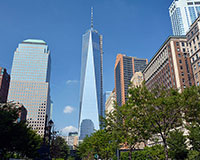
Market differences
So what are the prospects for rental growth in the 600m sq ft Manhattan office market and do they justify the prices being paid?
“There are really three dominant stories at the moment,” says Savills Studley president Michael Colacino, “Downtown, Midtown South and Midtown.”
The Downtown market is in the process of a huge transformation, thanks to the redevelopment of the World Trade Center site, which has attracted new occupiers to an area previously dominated by financial services.
The development of a new transport hub has turned Downtown into an obvious option for major occupiers, such as Time Inc and Condé Nast, which would previously not have considered the area.
But the sheer volume of development means that availability rates remain stubbornly high at 17.8% and asking rents are a modest $56.71, according to Savills Studley.
Immediately to the north, the Midtown South market continues to feel the white-hot Google effect, with wave after wave of tech, media and creative occupiers competing for the high-ceilinged warehouse-style buildings that until the last decade had made the area all but obsolete.
The result has been the biggest transformation in the New York – or almost any – office market, with asking rents jumping from around $38 per sq ft in 2010 to more than $73 today, according to Savills Studley.
Like Downtown, Midtown South has also benefited from relocations of companies from the traditional Midtown office market. In fact, 37% of the companies taking space in Downtown between 2007 and 2014 came from Midtown, while the same was true of 43% of companies moving to Midtown South during the same period, according to Crains/Savills Studley data.
The influx has pushed Midtown South’s vacancy rates to record lows of just 4.4%.
Further up in Midtown, the story is more complex.
Private equity, hedge funds and venture capital firms – industries that have boomed in part thanks to the largely jobless recovery staged by Wall Street’s big banks – are competing for a very limited amount of super-prime office space, according to Colacino.
“They want the tops of buildings and the best spaces.”
“We are seeing $200 per sq ft deals that are just totally disconnected from the rest of the market,” he says. “They want the tops of buildings and the best spaces.”
The appetite for super-prime trophy Midtown office space has prompted L&L Holding Company, which recently broke ground on a 47-storey office tower at 425 Park Avenue, to seek unprecedented asking rents of $250 per sq ft.
But that masks a much more varied picture across the rest of Midtown.
The exodus of large tenants south to the new stock being developed in Downtown and at Hudson Yards is leaving significant vacancies in some large buildings.
At the end of the second quarter this year, 24.8m sq ft of grade-A space was immediately available, more than double the 12m sq ft that was available in mid-2007.
And the city is in the early stages of its biggest development surge since the 1980s. Somewhere between 15m sq ft and 25m sq ft of new office space will be delivered over the next few years.
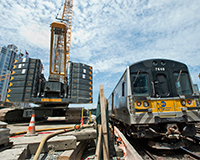
Related’s Hudson Yards and Brookfield’s Manhattan West will add 12m sq ft of new office space to Midtown, while lower Manhattan has about 4m sq ft of new or renovated space to absorb, principally at the World Trade Center and 28 Liberty Street.
And as tenants move into this efficient new space, they will leave behind much larger voids in older, less efficient buildings.
In fact, for the first time there has been a real divergence between office employment in the city and the amount of office space that is actually occupied, a symptom of new open-plan and flexible working environments and the increased efficiency of new buildings.
That has been reflected in the city’s take-up figures which, apart from some headline deals, remain lacklustre.
Around 7.7m sq ft of office space was leased in the second quarter of 2015, the first rise since 2013, but still well short of the long-run average of 8.3m sq ft, raising a question about the future balance between demand and supply.
“There is an overhang of space that is going to come online in 2017 and 2019,” says Mitchell Steir, chairman and chief executive of Savills Studley, and a man who has leased more than 60m sq ft of space during his career in New York, suggesting the end of this cycle could soon be in sight.
Predicting exactly how long there is left to run in a cycle makes fools of all who try.
But if we are in the seventh inning, investors might be well advised to take advantage of a good long stretch and a touch of market analysis before readying themselves for the final stages of the game.
jack.sidders@estatesgazette.com












